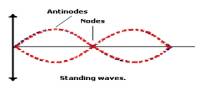It is frequently claimed that singularities, such as those at the center of black holes when density becomes infinite, are locations where physics “breaks down.” Although this does not imply that “anything” is possible, physicists are curious about which rules might fail and how.
Now, a research team from Imperial College London and the Cockcroft Institute and Lancaster University have proposed a way whereby singularities could violate the law of conservation of charge. Annalen der Physik published their theory.
Co-author Professor Martin McCall, from the Department of Physics at Imperial, said:
“’Physics breaks down at a singularity’ is one of the most famous statements in pop-physics. But by showing how this might actually happen, we take aim at one of the most cherished laws of physics: the conservation of charge.”
According to the principle of charge conservation, the overall electric charge of any isolated system, including the entire universe, never changes. This implies that an equal number of the correspondingly charged particles must exit if negatively or positively charged particles enter a space.
This has been demonstrated at the tiniest scales: in tests like the Large Hadron Collider, the same number of positively and negatively charged particles is always generated or destroyed, respectively, when different particles are produced or eliminated.
There are also philosophical implications. Although people often like to say that physics ‘breaks down’, here we show that although exotic phenomena might occur, what actually happens is nevertheless constrained by the still-working laws of physics around the singularity.
Dr. Paul Kinsler
Now, the team has been able to demonstrate that transient singularities, such as black holes that arise and then later evaporate, could destroy charge when they reach the end of their life by changing standard physics equations to incorporate axions, a candidate for dark matter.
The’missing’ 85 percent of the universe’s matter, called dark matter, may be explained by hypothetical particles called axions. Their anticipated characteristics might interact with the electromagnetic fields that physicists have known about for millennia and which are described by a set of equations known as Maxwell’s equations.
Using a branch of mathematics called differential geometry, the team found out how to create or destroy charge, violating the charge conservation of the Universe.
Co-author Jonathan Gratus said: “You can imagine creating an ‘axion bomb’ that holds charge by combining coupled axion and magnetic fields; and then dropping it into an evaporating black hole. As the construction shrinks and disappears into the singularity, it takes electrical charge with it. It is the combination of a temporary singularity and a newly proposed type of axion field that is crucial to its success.”
Co-author Dr. Paul Kinsler, from the Department of Physics at Imperial, said:
“There are also philosophical implications. Although people often like to say that physics ‘breaks down’, here we show that although exotic phenomena might occur, what actually happens is nevertheless constrained by the still-working laws of physics around the singularity.”
The team claims that the axion phenomena would only occur under extremely difficult circumstances that are now impossible to produce in a lab, but that future developments in powerful laser beams might enable testing of the idea in a terrestrial setting.
















